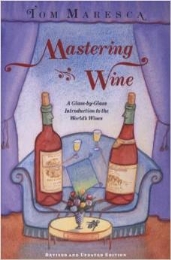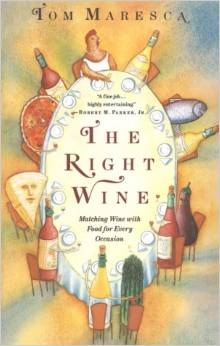Despite being an active partisan of Italian wines, I retain a deep love of French wines, especially the great French red wines. In my youth, I thought Bordeaux was king – and besides, Burgundy was way more expensive then. But now, the situation has completely changed: Bordeaux prices have caught up with or surpassed those of Burgundy, while winemaking in Burgundy is reaching new heights. Moreover, climate change is helping Burgundy achieve more good vintages than ever before, and at the same time many Bordeaux reds are tasting increasingly industrial to me – and yes, I am talking about classified growths. So I have been turning more and more often to the great Burgundy villages when I want a change of taste from my frequent Italian tipples. Ergo, Chambolle Musigny.
For me, the village of Chambolle is the sweet spot of the whole Côte d’Or. Opinions obviously differ about things like this, but for me Chambolle’s red wines have the greatest finesse, the loveliest, most complex fruit, the subtlest nuance of them all. Its two Grands Crus vineyards, Le Musigny and Bonnes Mares, are normally completely out of my price range, but the few times I’ve tasted either of them persist in my memory as moments of total palatal bliss – most notably, a lunch with the Drouhin family in Beaune a few years ago, at which they poured a 1968 Bonnes Mares. I don’t know which was my dominant feeling: honor at being so treated, or sheer ecstasy from the taste of that great wine.
 While I don’t have any Musigny or Bonnes Mares in my “cellar,” I do have a few bottles of Premier Cru Chambolle Musigny, and since Mortality has been looming over my friends lately, I sought consolation in a bottle just the other evening. I opened a 2004 Drouhin (regular readers will know my long-standing esteem for the house of Drouhin), decanted it and let it stand for about two hours before drinking it with a broiled top-quality strip steak. Bliss again, and a great respite from quotidian cares. The wine’s aroma was heady of bitter chocolate, tobacco, and dark, dry fruits. The palate was that and more, with mushroom and mineral notes interwoven with all that fruit and tobacco and chocolate. Diane and I sipped and savored and made that bottle last as long as we could, despite the temptation to just bathe in it.
While I don’t have any Musigny or Bonnes Mares in my “cellar,” I do have a few bottles of Premier Cru Chambolle Musigny, and since Mortality has been looming over my friends lately, I sought consolation in a bottle just the other evening. I opened a 2004 Drouhin (regular readers will know my long-standing esteem for the house of Drouhin), decanted it and let it stand for about two hours before drinking it with a broiled top-quality strip steak. Bliss again, and a great respite from quotidian cares. The wine’s aroma was heady of bitter chocolate, tobacco, and dark, dry fruits. The palate was that and more, with mushroom and mineral notes interwoven with all that fruit and tobacco and chocolate. Diane and I sipped and savored and made that bottle last as long as we could, despite the temptation to just bathe in it.
I know the village of Chambolle doesn’t loom as large in wine folklore as its neighbors, Vougeot and Morey Saint Denis, or the further distant Vosne Romanée or Corton. I guess that’s the only thing that has kept its prices from passing beyond all human reach. That narrow stretch of Burgundian hillsides that we call the Côte d’Or runs from a little south of Dijon to a little south of Santenay, a distance of only about 30 miles, regularly punctuated by different villages with at least slightly different terroirs. Chambolle lies in the middle of the northern half of the Côte de Nuits, which is the northern half of the Côte d’Or (the southern half is known as the Côte de Beaune).
If you drive south from Dijon on Route Nationale 74, which runs the length of the Côte d’Or, you’ll pass many famous wine towns. Before you reach Chambolle are Marsannay, Fixin, Gevrey Chambertin, and Morey St. Denis. Just south of Chambolle lie Vougeot, Vôsne Romanee, and Nuits Saint Georges. This is obviously great wine country, and Chambolle Musigny’s sparse, pebbly, limestony soil is typical of the meager soils on which great wines grow. Plots are characteristically small – Le Musigny totals only a little over 10 hectares, and Bonnes Mares 15 – and are frequently divided among many owners, as is typical in Burgundy. Production is very limited, by law and by the quest for excellence as much as by nature: Hail is frequent here and can be very destructive – thus the always substantial price of good Chambolle Musigny. I can only say that the examples I’ve been fortunate enough to enjoy have been worth it.
Lest you think I’m simply raving, let me close this post with Clive Coates’ summary words about the Grand Cru Le Musigny (Côtes d’Or, p. 105):
At its best the red wine can be quite simply the most delicious wine to be found in Burgundy. Speaking personally, and I am not the only one, it is the summit of achievement. With its vibrant colour, exquisitely harmonious, complex, profound bouquet, the blissful balance between tannin, acidity, and the most intensely flavoured fruit – all the petits fruits rouges you could reasonably imagine – and its incomparable breed, depth, originality and purity on the finish, a great Musigny is heaven in a glass. Would that one could afford to drink it more often.
Now that’s enthusiasm! I’ll only add that the “lesser” wines of Chambolle Musigny are, in proportion, just as profound and moving. It’s a special occasion wine for sure, but one capable of making an occasion special.





I find as a general rule, old wines don’t need decanting. I would point out though that odd bottles suffering from “bottle stink” usually come good just by letting them stand a while. One wants to keep as many of those luscious esters as is possible. Some young wines (certainly not all) appear “closed” when the bottle is opened. Those particular wines can benefit from aeration. We all know that a large part of taste is smell. Airing wines that don’t need airing is like throwing away some of the goodness. So I would recommend erring (or airing) on the side of caution.
Rick Faulds
(alias Ricardo Silverburn, children’s author)
Tom,
I certainly share your love of Chambolle-Musigny Burgundies. But I do not agree with your method of drinking them. They are not tannic wines, and , for me at least, do not require aeration. I open them and pour them immediately into a good Burgundy glass. For me, the fantastic aromas of a newly poured Burgundy are to be savored especially during those first few minutes. Perhaps I would give a more powerful Burgundy, such as Gevrey-Chambertin, a few more minutes, or a very young Burgundy. But not the older Burgundies.
Of course, I definitely decant Bordeux wines (exception: the very inexpensive ones), Barolo, and Barbaresco.
I have to disagree with you, Ed. I am finding more and more that almost all wines benefit from some aeration, and most especially inexpensive Bordeaux, which increasingly needs all the help it can get. Older wines of all kinds seem to need only a little aeration — just enough time for them to take a deep breath and relax, so to speak. You are right about the rich aromas of freshly opened Burgundy, but for me, aeration, while it may lose some of those aromatics, opens and deepens the palate of fine Burgundy. Chacun a son gout, eh?
Thanks for the wonderfully illustrated tutorial. A Happy Thanksgiving to you and Diane.
Thank you — and a slightly belated Happy Thanksgiving to you too.
Wishing you a happy thanksgiving, Tom.
Nice to read some of your thoughts on enjoying a delicious Burgundy. I enjoy the 2004 vintage and am pleased to discover you do as well, as not everyone does.
Does Nebbiolo ever remind you of burgundy? Not so much in flavor profile but in structure and behavior?
Thank you for the Thanksgiving wishes: I hope yours is equally happy.
I have found a lot to enjoy among the 2004s: I think that as a vintage it was undervalued when young and needed time to come round.
Finally, yes, I frequently think of Burgundy and Barolo/Barbaresco as, in effect, parallel wines — definitely in terms of structure and behavior and sometimes, as they age, even in terms of some elements of flavor.